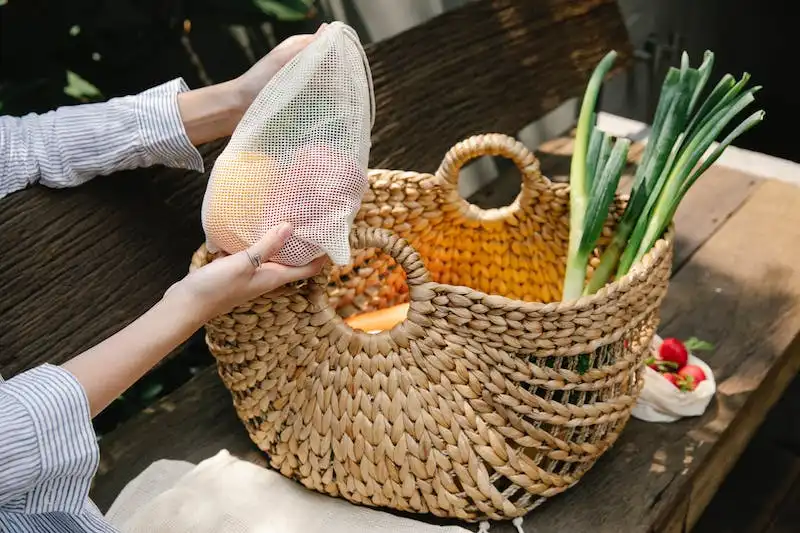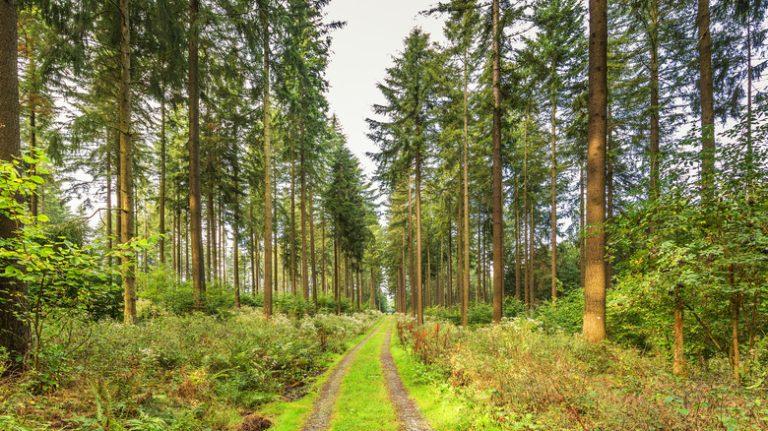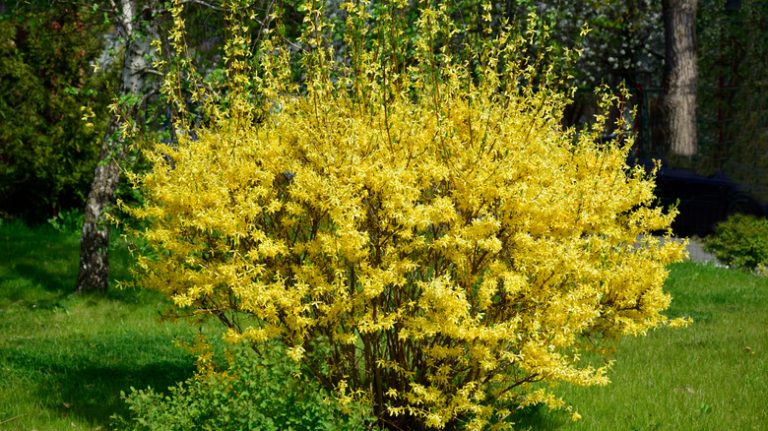Maple trees are known for their distinctive bark, which can vary in appearance depending on the species. One species, the negundo or boxelder maple (Acer negundo), has a bark that is dark gray, furrowed, and often covered in winged fruits. Another species, the silver maple (Acer saccharinum), has a bark that is light gray and has shallow furrows that give it a scaly appearance. The bark of the red maple (Acer rubrum) is gray-brown, smooth when the tree is young, and develops long, vertical furrows as it matures.
The bark of maple trees is not only interesting to look at, but it also serves a vital function for the tree. The outer layer of the bark protects the delicate inner layers from harsh weather conditions, insects, and pathogens. It also helps to transport water and nutrients from the roots to the leaves. The bark of maple trees is often used commercially, for example, in the production of maple syrup and as a source of wood for furniture and flooring.
Identifying maple trees based on their bark can be challenging, as many species have similar characteristics. However, there are some general guidelines that can help. Maple tree bark is often fissured, meaning it has deep cracks or furrows. The bark of older maple trees may become shaggy or peeling. Some maple species, like the boxelder maple, have a distinct pattern of raised lines running vertically up the trunk.
In addition to the bark, leaves can also be a helpful indicator for identifying maple trees. Maple leaves are typically palmate, meaning they have a lobed shape resembling a hand with the fingers spread out. The number of lobes can vary depending on the species, with some maples having three lobes and others having five or more. The color of the leaves can also provide a clue, with most maples having green leaves that turn vibrant shades of red, orange, or yellow in the fall.
If you’re interested in learning more about maple tree bark and how to identify different species, there are many resources available online and in print. Field guides and online identification tools can help you learn to recognize the unique characteristics of each species. Consulting an expert or joining a local nature group can also provide valuable guidance and resources. So next time you come across a maple tree, take a closer look at its bark and you may discover a whole world of fascinating details!
Identifying Maples for Backyard Sugaring
Maple trees are a popular choice for backyard sugaring due to their high sugar content in the sap. When it comes to identifying maples, one key characteristic to look for is the winged bark. Not all maples have this feature, but it is a good starting point for identification.
Here are a few tips to help you identify maples for backyard sugaring:
1. Check the Bark: Maples have a variety of bark characteristics. Some have smooth bark, while others have furrowed or cracked bark. The bark of older maples tends to be rougher and more furrowed. Look for the characteristic winged bark, which appears as long, vertical ridges that run down the trunk and branches.
2. Look for the Leaves: Maples have distinctive leaves with 3-5 lobes, known as leaflets. The shape and size of the leaflets can vary between maple species. For example, Norway maples have larger leaves with smoother edges, while silver maples have deeply lobed leaves with jagged edges. Pay attention to the leaf shape and the number of lobes when identifying a maple tree.
3. Observe the Growth Pattern: Some maple species have a distinct growth pattern. For example, boxelder maple (Acer negundo) often grows in wet areas or along streams, while silver maple (Acer saccharinum) tends to grow near water sources. These growth patterns can help narrow down the potential maple species in your backyard.
4. Take Note of the Sap: The sap of sugar maple (Acer saccharum) is the most commonly used for sugaring. It has a higher sugar content than other maple species. However, other maples, such as red maple (Acer rubrum) and black maple (Acer nigrum), can also be tapped for sap. Pay attention to the sap characteristics, such as color and taste, to help identify the maple species.
While this guide can help you identify maples for backyard sugaring, it’s always a good idea to consult an expert or field guide for complete identification. Commercially available resources and online media can also provide valuable information and images for maple tree identification.
Maple Tree Bark
The bark of maple trees varies by species and can be used to help identify the type of maple tree. Maple tree bark can be smooth, furrowed, or have shallow grooves, depending on the species. In the winter, the bark may have frost on it, giving it a silvery appearance.
One way to identify maple trees by their bark is to look at the pattern of the bark on the trunk and branches. The bark of the Norway maple (Acer platanoides), for example, is grayish-brown and has deep furrows with thick ridges. On the other hand, the bark of the boxelder maple (Acer negundo) is light gray and has smooth, thin bark.
Another characteristic of maple tree bark is its response to injury. When maples are wounded, the bark will often turn black and start to crack or split. This can happen when a branch is cut or when the tree is improperly pruned.
In addition to its use in identifying maple trees, the bark of certain species is also commercially valuable for its wood. The silver maple (Acer saccharinum), for example, has attractive bark that is often used for veneer and furniture.
To help with identifying maple trees by their bark, you can use a field guide or consult an expert. There are also online resources available that provide detailed descriptions and images of maple tree bark to assist with identification.
Overall, maple tree bark is a unique and beautiful feature of these trees. It can vary in appearance depending on the species and age of the tree, and it can be a useful tool in identifying individual maple trees. Whether you’re a backyard gardener or a forestry expert, understanding maple tree bark can be a valuable and fascinating part of appreciating these iconic trees.
Maple Tree Bark Cracking 622518
Maple trees are a genus of trees that are widely available in North America. There are many different species of maples, each with their own unique characteristics. One of these characteristics is the bark of the tree.
Maple tree bark can be used as a guide to help identify the species of maple tree. The bark of maple trees can vary widely in appearance, from smooth and silver in color to furrowed and dark. Some maples have bark that is split into ridges or scales, while others have bark that is smooth and unbroken.
One common issue that maple trees can experience is cracking in their bark. This can happen for a variety of reasons, including frost damage, age, and disease. Cracking in the bark of a maple tree can be a sign that the tree is not healthy or that it is not getting the nutrients and moisture it needs to thrive.
If you notice cracking in the bark of your maple tree, it is important to take action to address the issue. This can involve pruning damaged branches, mulching around the base of the tree, or treating any underlying diseases or pests. Consulting with an expert in tree care can be helpful in determining the best course of action for your specific situation.
While cracking in the bark of a maple tree may not be a major concern, it is important to monitor the health of the tree and take steps to address any issues. Maple trees are valuable both for their beauty and for their wood, so it is important to keep them healthy and thriving.
In conclusion, maple tree bark cracking can be a sign of an underlying issue with the tree. By identifying the cause of the cracking and taking appropriate action, you can help ensure the health and longevity of your maple trees.
Sources:
– Maple Tree Bark Identification Guide
– Expert Tips for Maple Tree Care and Maintenance
Expert Response
When it comes to identifying maples by their bark, there are a few key characteristics to look for. Many maples have bark that is gray or brown, but some species can have lighter or darker shades. The bark can be smooth, ridged, or furrowed, with some species having a combination of these textures. For example, the boxelder (Acer negundo) has smooth and furrowed bark, while the norway maple (Acer platanoides) has ridged bark.
Another important feature to look for is the presence of winged branches. Most maples have branches that grow opposite each other, forming a “V” shape. This can be a helpful clue in identifying maples, as many other tree species have alternate branching patterns.
The leaf shape and arrangement can also be a useful identification tool. Maple leaves are generally palmately lobed, meaning they have lobes that radiate from a central point. Most maples have leaves with three to five lobes, but some species, like the boxelder, have compound leaves with three to seven leaflets.
In addition to bark and leaf characteristics, you can also look at the overall shape of the tree. Maple trees typically have a rounded crown and a straight trunk, although there can be variations in growth habit depending on the species.
If you’re still having difficulty identifying a maple tree, there are many resources available to help. Field guides, online databases, and apps can provide detailed information and photos of different maple species. Additionally, contacting a local arborist or forestry expert can provide you with individualized assistance in identifying maple trees.
After identifying a maple tree, you may be wondering about its use. Maple trees are widely known for their sweet sap, which is tapped and processed into maple syrup. This process, known as sugaring, is a popular tradition in many areas of North America and can even be done in a backyard setting. The wood of maple trees is also highly valued for its durability and attractive grain, making it a popular choice for furniture and flooring.
In conclusion, identifying maple trees by their bark, branches, and leaves can be a fascinating and rewarding experience. By understanding the key characteristics and using available resources, even the most challenging identification tasks can be accomplished. So, go out and explore the diverse world of maples!
Maple Tree Identification – A Complete Guide
When it comes to identifying maple trees, the bark can be a valuable clue. The Acer genus is known for its distinctive bark, which can vary greatly depending on the species. Maple trees have thick, furrowed bark on their trunks and branches, while the bark on younger trees and branches is smoother and lighter in color.
In response to damage, maple tree bark can turn red or create shallow grooves. This can happen due to factors such as pests, diseases, or environmental stress. Mulching around the base of the tree can help protect the bark from extreme temperatures and prevent it from splitting.
Identifying maple trees can be challenging because there are many different species and variations. An expert can provide accurate identification, but there are also some key features to look for. For example, the leaf shape and arrangement can help distinguish between different maples. The leaflets are usually arranged in a palmate pattern and have pointed lobes. Some maples, like the silver maple and norway maple, have deeply lobed leaves, while others, like the black maple and boxelder, have more rounded leaf margins.
In addition to the bark and leaf characteristics, the seeds and flowers of maple trees can also provide clues for identification. The seeds, often called “helicopters” or “samaras,” are winged and fall from the tree in pairs. The flowers are usually small and inconspicuous, but they can be an important identifying feature.
There are commercially available field guides and identification keys that can help with maple tree identification. These resources often include detailed descriptions and photographs of the different species and their unique features. Another useful tool is a dichotomous key, which is a step-by-step guide that leads you to the correct tree based on a series of choices between two characteristics.
Whether you’re a backyard enthusiast or an experienced arborist, identifying maple trees can be a rewarding and educational experience. The trees in the Acer genus offer a wide range of breathtaking beauty and can thrive in various climates and environments. So take a closer look at the bark, leaves, and seeds of maple trees and discover the wonders they have to offer.




